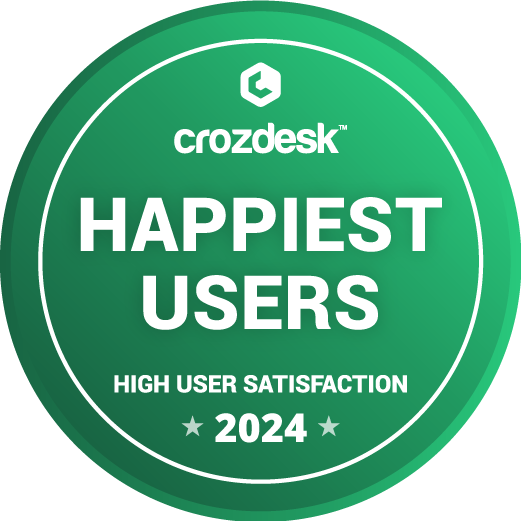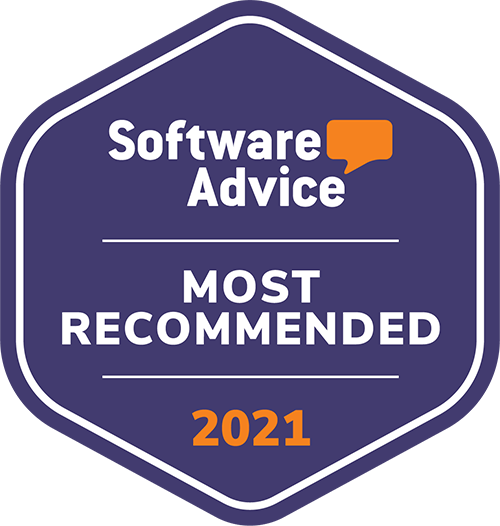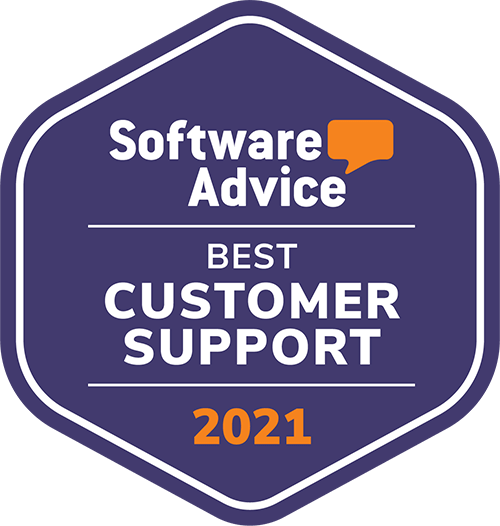It wasn’t a hard choice to select SmartSurvey. Not only did they understand what we were looking to achieve right from the start, they presented a solution that represented everything we needed.
What To Do With Employee Engagement Survey Results
What To Do With Employee Engagement Survey Results

Time for action
So you’ve spent a huge amount of time and effort putting together and running an employee engagement survey. People responded in their droves, you got the results back in a timely fashion, but what do you do now?
All too often, the act of performing the survey is seen as ‘job done’. Results get scanned over, then disappear.
Your employees deserve to know what the results of your survey are. You need to be transparent and share them.
Working out what to do with employee engagement survey results is actually one of the most important steps you need to take. You’ll need to spend time analysing and digesting your responses before communicating the results, and what they mean, to your team, even if they are bad. You want to celebrate any good news too.
But before you’ve even started crunching numbers, once a survey has ended you need to communicate what your next steps are going to be. Thank your employees for taking part, let them know the timescales you’re working to for analysing your results, and when they can expect to hear more information.
How to analyse and interpret your survey results
While you can view your responses in real-time, and look out for any key trends as the results are still coming in, you may be better off leaving any in-depth analysis until your survey has been completed.
Your survey results will vary depending on the types of employee engagement questions you’ve asked, but there are methods for quick analysis of every type, whether you’re looking for trends from a scaled response or common answers from text feedback.
When using a survey tool like SmartSurvey you’ll be able to make graphs and produce charts at the click of a button, which will help you spot any key trends and visualise any areas of concern. Text analysis can be used to pull out frequent responses from text questions, and you’ll be able to create word clouds and categorise responses. This makes the process of running any HR survey even more seamless.
Some number crunching may be involved and you may want to share the initial results with a small group so they can help with interpreting the numbers and spotting trends. You’ll want to be absolutely certain what your response is going to be before you start sharing the feedback on employee engagement with the wider team.
How to share your employee engagement survey results
Now you’ve collected all of the employee feedback and checked every response, you want to follow a set of simple steps for sharing employee survey results. Starting with thanking your employees, managing their expectations and analysing your results, before moving on to sharing results with your employees, collating further employee feedback and finally celebrating your successes. Each of these stages has a number of things to consider.
Be grateful for your employees’ time and feedback, be transparent about the timelines for both results and change.
The simple steps for sharing employee engagement survey results are:
Thank employees for taking part
As soon as the survey is complete, the first step to keep up both involvement and momentum is thanking your employees for their time. This is an important part of the survey process. You want to thank your employees for their survey responses, and communicate this company-wide. This is before you’ve analysed any results, so it’s a great opportunity to be positive about the response rate and any top-level observations before setting out action plans.
Manage employee expectations with next steps
Once you’ve thanked your employees for their involvement, you want to manage any expectations for what is going to happen with the results. You’ll want to start with reporting back on completion rate, and what the timelines will look like for more detailed feedback.
Communicate this clearly to the whole team, stating when they can expect to hear full feedback, what you’ll be doing in the meantime and how they can expect to hear from you. You should be transparent with the timescales and the process you’re going through so they know that their feedback isn’t being ignored.
Your transparency should include:
- Who is leading on analysis
- Who is going to be communicating results
- How they are going to be analysed
- When employees can expect to hear about the results
Analyse the results with your leadership team
This section will fall into two stages:
- Stage one – analysis
- Stage two – presenting findings to your leadership team
An important part of your next steps will be your analysis of the survey data. This analysis can be completed by both HR and leadership, depending on the set up of your team. If you have both, we’d strongly recommend you do this analysis as a collaborative effort, as more eyes can help you understand key themes. You need to define what it is you want to get out of your results and present it internally to leadership before you communicate everything to the company.
Your analysis needs to look at demographics, trends across multiple questions and standalone statistics. The SmartSurvey platform has a number of features designed to help you dig deeper in simple ways, with data visualisations and word clouds for text answers.
Once you’ve done this, and pulled out your key findings, you should present them to your leadership team. This presentation should give an overview of where you were at before, any previously run schemes, the initial response rates, your analysis and then the results and what you are suggesting is done with them.
Leadership can help with any talent or business decisions that need to be made to help you take action.
Then, once you and your executive team are happy with the plans, you want to move on to the next stage.
Provide detailed results
Now you’re ready to provide feedback to the wider team, you want to make sure you do it both clearly and in detail.
Your communications should be company-wide. This could simply be an email aimed at the whole business, or an all-hands meeting. Ideally, you’d do both.
An all-hands or town hall meeting gives you the chance to present your findings in full, add context and ensure your employees are engaged with the results. This presentation should cover:
- Why you ran the survey in the first place
- How you see results shaping the business
- An overview of your key findings
- Your proposed next steps, with timelines
- A chance for immediate feedback
Once you’ve done this, you can share the presentation, and more detailed findings, with the company via email too.
Your roadmap could include the implementation of different employee engagement strategies, introducing new engagement ideas and initiatives or simply tracking progress with pulse surveys.
You may also wish to have meetings with individual teams if there are key trends for these. You can do this via their department managers and work with them on any important issues or takeaways. At the very least, you should give the team leads access to their team’s results, filtered for easy digestion.
Give opportunity for employees to provide feedback
Once you’ve shared your results with the team, you should give them an opportunity to provide feedback. Data alone doesn’t always tell the whole story, and people may have something to say about your findings or the next steps you’re proposing.
Give people the chance to do this anonymously if they like, via email or face to face. You could set up a number of open-door sessions where people can come and talk to you about the results.
Celebrate good news and success with employees
While employee surveys can sometimes bring up uncomfortable problems that you need to confront, they can often shine a light on good news and success too. Anything positive that comes out of your results should be celebrated.
This gives you a chance to share positive stories and also to look at what you’re doing right. Can you be doing more of that, or is there anything you can learn from your success that can be applied to other parts of your business?
Don’t let your success dwarf anything that needs fixing, but don’t ignore it either.
Communication tips when sharing your employee engagement survey results
When it comes to communicating your results and strategy, you want to be as transparent and clear as possible. Employee experience is a key part of increasing engagement, and the way you communicate your results with your team can affect how they respond. We’ve put together our top tips for sharing results, whether it’s from managers or your HR team.
Communicate clearly, with transparency
Don’t hide anything from your team. Anything you get from your analysis should be included. Don’t try and hide anything bad and make things look better than they are, but also don’t make things out to be worse. Be transparent with the findings and what that means for your future plans.
Be concise with how you share it too. Pull out focus areas and provide an easy to understand project plan. You want people to be able to understand the key points at a glance. It’s not their job to do the data mining and read between the lines.
Stand by the responses that have been provided
Your employees spent time replying to your questions and you should respect that. Don’t talk down to anyone when you’re communicating the results. Employees know what they responded with, and won’t appreciate you pretending responses were different.
If you guilt-trip them they’re less likely to be honest in future surveys and they should never feel bad about the way they’ve responded to a survey. Sure, your results may have revealed things that unsettle you, but it’s on you to fix, not to brush under the carpet.
Don’t debate responses – they are what they are
You aren’t here to decide which responses are correct, or which are more important. They aren’t there to be debated. So even if you don’t agree with the response that an employee has given, you need to understand why they gave it, not argue with them about why you think they’re wrong.
Doing this could undermine all the hard work you’re putting in, create engagement obstacles and potentially alienate employees.
Don’t play the blame game
Survey results are anonymous. Outside of understanding how a team or department is feeling, you should never spend time speculating on who has responded in a particular way. Doing this can lead to negativity and mean you overlook other things within your findings.
How are we different?
UK based
Your data will be stored and processed here in the UK for your peace of mind.
Fanatical support
We pride ourselves on going above and beyond for our customers, providing expert advice and support whenever you need it.
You're in safe hands
Our secure platform and robust data protection measures ensure your data is safe and secure with us. We are ISO27001 and Cyber Essentials Plus certified.
We're human
We understand the importance of personal interaction, which is why we offer a human touch alongside our cutting-edge technology.
Accessibility matters
We're committed to making our surveys accessible to everyone, with a range of features to support those with disabilities.
Unlimited responses
With no limits on the number of responses you can collect, you can be sure your survey will reach as many people as possible without it being cost prohibitive.

Don’t just take our word for it
Over 500,000 users have registered to use SmartSurvey.


We couldn't be happier with SmartSurvey, we love its functionality and flexibility. This means we have been able to use one survey tool across many parts of the business.








Get in touch
We are ISO27001 certified, registered under the Data Protection Act and fully compliant with EU Privacy Laws.
Access to a knowledgeable account manager for personal assistance for when you most need it.
Our friendly design team is on hand to assist with any bespoke design and custom development requests.
We succeed if you succeed. Our goal is to help you carry out effective research and we’re here to help you achieve that.
